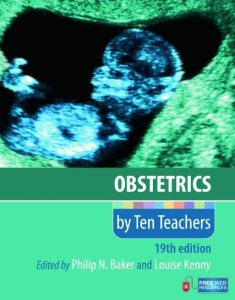

Interpret critical clinical and laboratory findings which were key in the processes of exclusion, differentiation and diagnosis: Select and interpret abdominal imaging (radiography, computed tomography (CT) scan, ultrasound, etc.) in patients with an abdominal mass. Describe the risk factors which would predispose to the various causes for abdominal mass. Determine the physical characteristics enabling diagnosis of masses arising in specific organs. Determine which patients are likely to have a neoplasm causing the abdominal mass. Through efficient, focused data gathering: Exclude pregnancy as cause of the abdominal mass. ĭistinguish intra-abdominal from abdominal wall masses.Distinguish the cause of an abdominal mass based on history and physical findings.Malignant nodule (Sister Mary Joseph nodule)Ġ Endometriosis 0 Embryological remnants (vitelline duct, urachus) Key Objectives Masses in abdominal wall (see #002G Abdominal Hernia) a) Rectus sheath haematoma b) Desmoid tumour c) Umbilicallump/discharge Lymphadenopathy a) Lymphomas b) Metastases Vascular (abdominal aortic aneurysm) Gynaecologic J Pelvic a) Pregnant uterus b) Ovarian mass c) Enlarged bladder Gastrointestinal system masses a) Gastric, colonic, appendiceal b) Stool c) Pancreatic (pseudocyst) d) Gallbladder mass (See #002A Epigastric Mass - #002F Left Iliac Fossa Mass.) Causes 1)ī) Splenomegaly c) Enlarged kidneys d) Retroperitoneal masses The large number of possible causes can be made more manageable by focusing on the site and physical characteristics of the mass. Intra-abdominal masses must be differentiated from abdominal wall masses. Overview Most abdominal masses represent significant underlying disease requiring complete investigation. Select patients in need of specialised care. Contrast the immediate and long term management of a patient with cirrhotic ascites versus malignant ascites. Recommend paracentesis when indicated and interpret the results.Ĭonduct an effective plan of management for a patient with abdominal distension/ileus: Outline the short term medical and surgical management of patients with gaseous distension. Interpret the critical clinical and laboratory findings which were key in the processes of exclusion, djfferentiation and diagnosis: Select and interpret abdominal X-rays and other appropriate investigations used in cases of abdominal distension. Elicit information on risk factors which would predispose to the various causes for abdominal distension. Through efficient, focused data gathering: Differentiate clinically the aetiology of abdominal distension.Identify causes of acute abdominal distension requiring urgent early care. Differentiate between causes of abdominal distension based on history and physical findings.etc.)Ĭhronic abdominal distension (usually painless) a) Ascites b) Faecal impaction c) Large abdominal or pelvic mass 0ĭ) Pregnancy (exclude first in females) e) Subjective (false pregnancy, irritable bowel syndrome, obesity)Ĭhronic nonmechanical intestinal pseudo-obstruction a) Enteric nervous system (amyloidosis, diabetes, paraneoplastic)ī) Extrinsic nervous system (stroke, spinal cord injury, multiple sclerosis Parkinson disease, autonomic dysfunction) c) Smooth muscle (scleroderma) Secondary to severe systemic illness or retroperitoneal pathology (haemorrhage, tumours. Toxic inflammatory bowel disease (I BD) (toxic megacolon) Secondary to ischaemia (mesenteric infarction. Transient postoperative physiological ileus U Small and large intestine - 'paralytic' or 'spastic' ileus U Large intestine - tumours, diverticular disease, volvu lusĪbdominal distension- pyloric stenosis (adult)ī) Non-mechanical intestinal obstruction (acute intestinal pseudo-obstruction- sometimes painless}. CausesĪcute abdominal distension a} Mechanical intestinal ob struction (luminal, wall, extrinsic- usually painful} The most common causes are adhesions, tumours, hernias, volvul us U Gastric outlet obstruction. and the False impressions of pseudopregnancy. which cover many of the causes over both groups: Fluid, Flatu s. Clinically, distension is separable into two main types of presentation: Acute distension (usually painful and predominantly surgical), or Chronic/ Subacute distension (usually painless and associated with obstetrical/ gynaecological and medical causes). Overview Abdominal distension is common and may indicate the presence of serious intraabdominal or systemic disease. 001 Abdominal Distension/Ileus (Ascites, Bowel Obstruction)


 0 kommentar(er)
0 kommentar(er)
